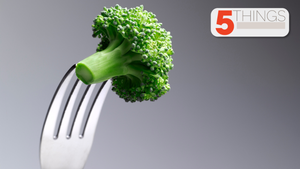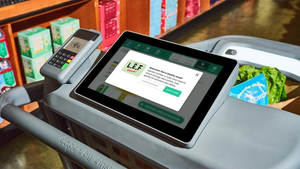Sounding Board: Looking at Local
Chipotle’s recent E. coli outbreak raises the question, what should be considered local?
January 1, 2018
Is there such a thing as food being too local?
If you ask the legions of loquacious locavores that have sprung up over the past decade, the answer would be a resounding “No!”
However, it is an interesting question that has been raised as multi-state E. coli outbreaks continue to mount at Chipotle Mexican Grill, sending up a warning flag for retailers.
Chipotle operates about 2,000 outlets nationwide and buys about 10 percent of its produce locally. At press time, the actual source of the outbreak was still unknown and the co-CEOs were all over the financial media doing damage control.
It is going to be a long road back for the Chipotle brand. I believe the chain will eventually work its way back into the hearts and stomachs of patrons around the country once the stores and suppliers get a clean bill of health.
However, it seems prophetic for a company that has publicly criticized and satirized other fast-feeders for using so-called “factory farms” and mass production, to be—so to speak—hoisted on its own petard.
As the investigation continued, Chipotle decided to cut back on local product and institute central control over preparation and storage in order to bolster food safety. This was not an easy decision, and a drastic change considering the chain’s growth and image has been based on the use of fresh, local products.
The new process involves cutting, sanitizing and hermetically sealing tomatoes, cilantro and lettuce in a central kitchen where they are inspected and then shipped out to restaurants. What choice was there, considering there have been six outbreaks since July including salmonella in tomatoes. Interestingly, some observers have speculated that Chipotle’s doubling down on food safety could work against them with customers who like to see food prepared on site and might question the quality of the products that are not locally grown.
This again brings up the question of what should be considered local. If you look at a chain like Waitrose in the U.K., local is defined as within 30 miles of a store. In 2008, Congress’ Food, Conservation and Energy Act said the maximum distance food can be transported and still be considered local is 400 miles from its point of origin or within the state in which it is produced. Chipotle started out by defining it as products grown within 200 miles of restaurants. It is now up to 350 miles.
Basically, there is no definition.
I have to admit, wandering around local farmers markets is a Zen-like experience for me personally. As such, I certainly cannot fault those who are entranced by small-batch local product. It speaks of our desire for a simpler and safer time. Additionally, some view local food as insurance against natural disasters that take place thousands of miles away but disrupt the entire supply chain.
At the same time, I cannot bring myself to vilify corporate agribusiness for simply being big and efficient. And while there is some correlation between locally sourced food and health, imbuing local foods with the magical ability to make people healthier, reduce the carbon footprint or reshape the food business, is largely a myth.
Freshly harvested food that has been stored properly can retain its nutritional value. Perhaps it is more a matter of consumer education. If, for example, people do not like vegetables, it is more likely that preparation, not the location of the field, is at fault.
Studies have indicated that so called “factory-farms”—a name that needs to be replaced by something more benign—may be better for the environment because they are centralized and the products produced might be safer than those from small farms, which might not have all safety protocols in place. Moreover, economies of scale have supported new technologies that produce higher yields and food safety practices that have reduced foodborne illnesses to a fraction of what they once were.
In fact, two Canadian researchers have said that if we were still using 1950s technology we would have to harvest a land mass the size of South America to feed the world. Pierre Desrochers and his wife, Hiroko Shimizu from the University of Toronto have published a very controversial book called The Locavore’s Dilemma in which they state outright that the gains in food security and standards of living are due to the development of large producers and corporate agribusiness, despite protestations from food activists.
Len Lewis is a regular Grocery Headquarters columnist and veteran industry journalist.
About the Author
You May Also Like




